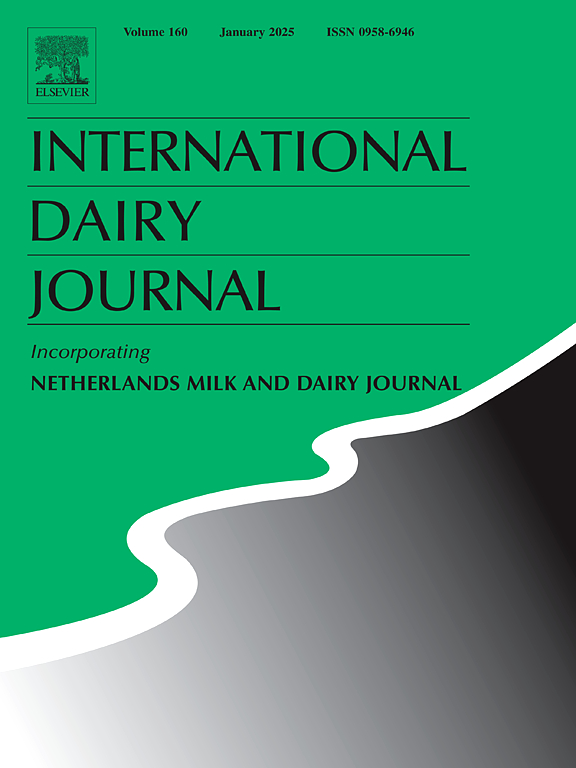Bacterial diversity, bioactive peptides, and enhanced immunomodulatory effects in raw milk kefir made with defined starter cultures versus backslopping
IF 3.1
3区 农林科学
Q2 FOOD SCIENCE & TECHNOLOGY
引用次数: 0
Abstract
This study compared the microbial composition, peptide profiles, and immunomodulatory effects of raw milk kefir produced using a defined starter culture (RMK-S) versus backslopping (RMK-B). RMK-B exhibited significantly higher microbial loads, with a 10-fold increase in total plate counts and 35-fold increase in lactic acid bacteria compared to RMK-S. This correlated with higher peptide content in RMK-B kefir, though RMK-S displayed higher bacterial diversity and a more diverse, bioactive peptide pool. Microbial analysis revealed RMK-S retained the starter culture's profile, while RMK-B was dominated by Lactococcus lactis and consistent yeast species, including Kazachstania, Klyveromyces, and Galactomyces. In a murine food allergy model, RMK-S kefir significantly reduced the allergic skin response and increased IFN-γ production, demonstrating enhanced immune modulation. RMK-B did not exhibit these protective effects. These findings point towards the role of bacterial diversity and peptide composition in kefir's health benefits, favoring defined starter cultures over backslopping.
细菌多样性,生物活性肽和增强免疫调节作用的生乳开菲尔与确定的发酵剂与后泔水
本研究比较了使用特定发酵剂(RMK-S)和后泔水(RMK-B)生产的生乳开菲尔的微生物组成、肽谱和免疫调节作用。与RMK-S相比,RMK-B表现出更高的微生物负荷,培养皿总数增加了10倍,乳酸菌增加了35倍。这与RMK-B克菲尔中较高的肽含量相关,尽管RMK-S显示出更高的细菌多样性和更多样化的生物活性肽库。微生物分析显示RMK-S保留了发酵剂的特征,而RMK-B主要由乳酸乳球菌和一致的酵母种类组成,包括Kazachstania, Klyveromyces和Galactomyces。在小鼠食物过敏模型中,RMK-S克菲尔显著降低了过敏皮肤反应,增加了IFN-γ的产生,表明增强了免疫调节。RMK-B没有表现出这些保护作用。这些发现指出了细菌多样性和肽组成在开菲尔的健康益处中的作用,有利于确定的发酵剂而不是后泔水。
本文章由计算机程序翻译,如有差异,请以英文原文为准。
求助全文
约1分钟内获得全文
求助全文
来源期刊

International Dairy Journal
工程技术-食品科技
CiteScore
6.50
自引率
9.70%
发文量
200
审稿时长
49 days
期刊介绍:
The International Dairy Journal publishes significant advancements in dairy science and technology in the form of research articles and critical reviews that are of relevance to the broader international dairy community. Within this scope, research on the science and technology of milk and dairy products and the nutritional and health aspects of dairy foods are included; the journal pays particular attention to applied research and its interface with the dairy industry.
The journal''s coverage includes the following, where directly applicable to dairy science and technology:
• Chemistry and physico-chemical properties of milk constituents
• Microbiology, food safety, enzymology, biotechnology
• Processing and engineering
• Emulsion science, food structure, and texture
• Raw material quality and effect on relevant products
• Flavour and off-flavour development
• Technological functionality and applications of dairy ingredients
• Sensory and consumer sciences
• Nutrition and substantiation of human health implications of milk components or dairy products
International Dairy Journal does not publish papers related to milk production, animal health and other aspects of on-farm milk production unless there is a clear relationship to dairy technology, human health or final product quality.
 求助内容:
求助内容: 应助结果提醒方式:
应助结果提醒方式:


